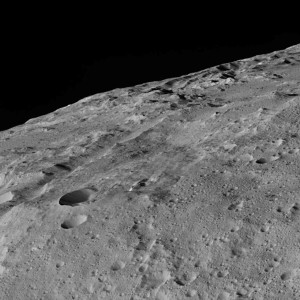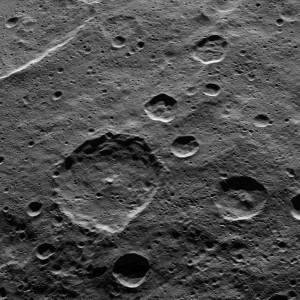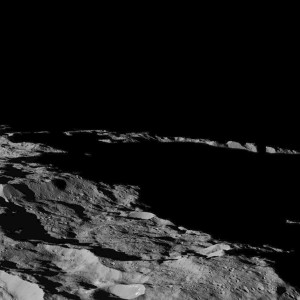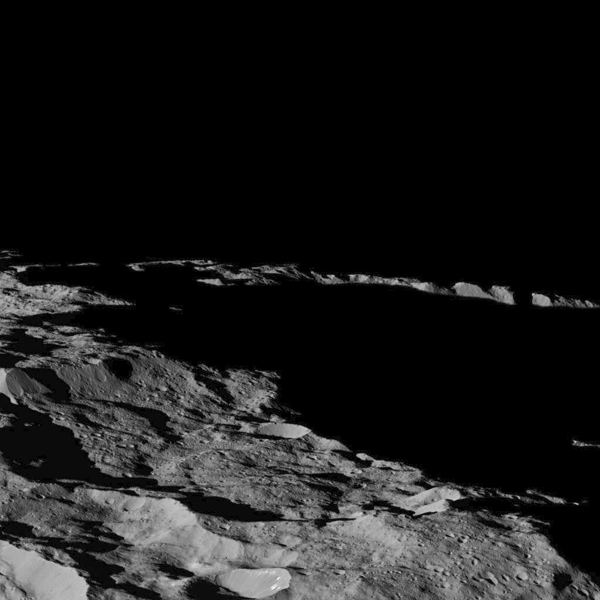NASA’s Dawn spacecraft, cruising in its lowest and final orbit at dwarf planet Ceres, has delivered the first images from its best-ever viewpoint. The new images showcase details of the cratered and fractured surface. 3-D versions of two of these views are also available.

This image of Ceres was taken in Dawn’s low-altitude mapping orbit around a crater chain called Gerber Catena. A 3-D view is also available. Image credit: NASA/JPL-Caltech/UCLA/MPS/DLR/IDA
Dawn took these images of the southern hemisphere of Ceres on Dec. 10, at an approximate altitude of 240 miles (385 kilometers), which is its lowest-ever orbital altitude. Dawn will remain at this altitude for the rest of its mission, and indefinitely afterward. The resolution of the new images is about 120 feet (35 meters) per pixel.

Part of the southern hemisphere on dwarf planet Ceres is seen in this image taken by NASA’s Dawn spacecraft. Hamori crater, named after a Japanese god and protector of tree leaves, is the large crater near the center of the image. Image credit: NASA/JPL-Caltech/UCLA/MPS/DLR/IDA
Among the striking views is a chain of craters called Gerber Catena, located just west of the large crater Urvara. Troughs are common on larger planetary bodies, caused by contraction, impact stresses and the loading of the crust by large mountains — Olympus Mons on Mars is one example. The fracturing found all across Ceres’ surface indicates that similar processes may have occurred there, despite its smaller size (the average diameter of Ceres is 584 miles, or 940 kilometers). Many of the troughs and grooves on Ceres were likely formed as a result of impacts, but some appear to be tectonic, reflecting internal stresses that broke the crust.

This part of Ceres, near the south pole, has such long shadows because, from the perspective of this location, the sun is near the horizon. Image credit: NASA/JPL-Caltech/UCLA/MPS/DLR/IDA
“Why they are so prominent is not yet understood, but they are probably related to the complex crustal structure of Ceres,” said Paul Schenk, a Dawn science team member at the Lunar and Planetary Institute, Houston.
Read the full story at the Jet Propulsion Laboratory website.

